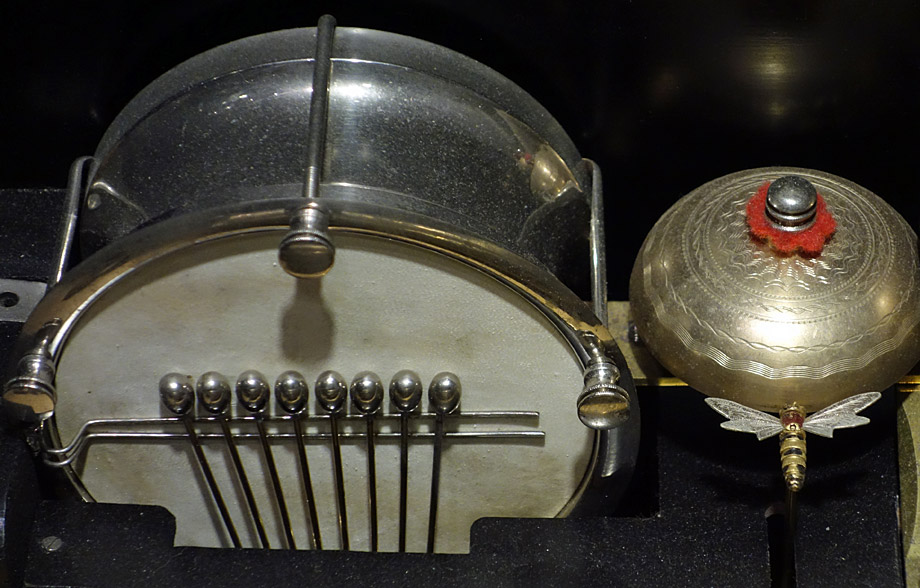WITH ITS lid up, the Orchestra Box reminds me of a pirates' chest filled with silver treasure. "If you see the word 'Orchestra' on a musical box you'll find it has several instruments," Owen explains.
"This one has got tuned bells, it's got a drum and it's got an organ, hidden in the cabinet. That's really what makes it an orchestra box. It has a very fine inlaid cabinet, silver-plated bells with birds sitting on top and struck by what look like bees. The drum has got eight drumsticks. There are ten pieces of music, all extracts from operas of the day."

I notice a dial which looks like the floor indicator on an old lift. "That tells you what tune you're on. Currently it's pointing at number five, and number five is a piece of music from 'Faust'. These musical boxes will play in sequence or you can play the same tune over and over again using the change-repeat lever. Very big double-clockwork motor on this orchestra box because it's got to power the organ as well."
Who made it and how did they set about their work? "This too was made by watchmakers, often in the winter when they were making clock and watch and musical box parts. When they could get back to the towns in the spring, because they'd be snowed in during the winter, the factories would assemble the parts. These were made by somebody in the winter in a chalet up in the mountains using a candle or an oil lamp with a bowl of water to focus the light."
Owen sees me squinting to try to make out tiny details. "Very, very fine work. The pins on the musical box cylinder are about half a millimeter in diameter."
He explains about how the makers were effectively pieceworkers, and that the boxes were assembled without regard to standardisation. This makes replacement cylinders impossible to get. Does this mean each machine in the Museum is unique? Owen replies: "Unique or part of a small series. They would be made for a specific market. That orchestra box was almost certainly made for the London market, rather than for Paris or Hamburg."
"If it wasn't popular music they wouldn't sell, so there had to be a sort of feedback loop for the retailers to say, this is the sort of music people want to buy. Down there you've got Tannhauser, Faust, some Verdi. These are from the popular stage shows of the day." Owen pauses, then adds: "Tannhauser's a little bit ambitious for a musical box but it manages."
Introduction • Musical box • Orchestra box • Orchestrion • Violin machine • Reproducing piano






